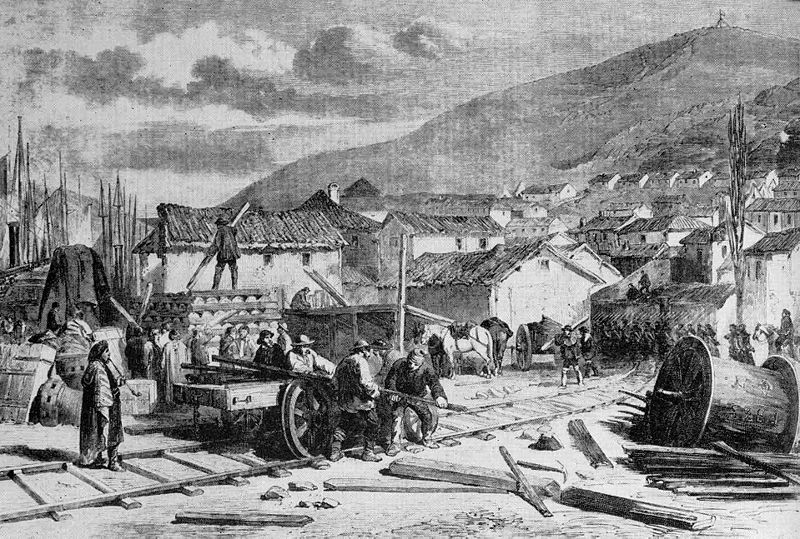James Simpson on the revolution in military affairs triggered by the development of the steam engine and the railways:

Navvies working on the Grand Crimean Central Railway, 1854. Charles Walker: Thomas Brassey, Railway Builder, 1969. (via Wikipedia)
Trains were cutting-edge weapons of war in the 19th century — and all the major powers were figuring out how to deploy them. The Europeans learned how to move troops by train. The Americans — how to fight on rail cars. The British, meanwhile, found they could dominate an empire from the tracks.
In today’s world of tanks, bombers and submarines, it’s perhaps hard to believe that the train was once an amazingly mobile weapons platform. They might be locked to their rails, but for over a century trains were the fastest means of hauling troops and artillery to front lines across the world.
The invention of the railway shaped warfare for a century. Rails allowed force projection across immense distances — and at speeds which were impossible on foot or by horse.
[…]
The first demonstration of the military efficacy of the railroads was the 1846 Polish Uprising. Prussia rushed 12,000 troops of the Sixth Army Corps, with guns and horses, to the Free City of Krakow to help put down the Polish rebellion. In this period of nationalist uprisings, Russia and Austria also used their railroads against similar uprisings from 1848 to 1850.
A lack of infrastructure and experience stifled the success of these early endeavors. Due to a lack of rolling stock, suitable platforms and double-track stretches, the trains sometimes operated far slower than a man could march on foot.
Austria was first to get it right. In 1851, the Austrian Empire shuttled 145,000 men, nearly 2,000 horses, 48 artillery pieces and 464 vehicles over 187 miles.



